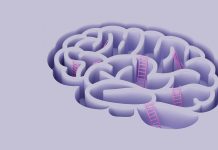There could be potential for treating post-traumatic stress disorder (PTSD) in military veterans
A study led by researchers at Brigham and Women’s Hospital focused on a specific brain circuit linked to PTSD, revealing future potential therapeutic avenues.
PTSD in veterans
Veterans are at a slightly higher risk of developing PTSD compared to civilians, with 7% of Veterans experiencing PTSD at some point in their lives, compared to 6% of the general population.
The likelihood of PTSD is even greater for female Veterans, with 13% affected, while 6% of male Veterans will have PTSD. Veterans who have been deployed are at higher risk, as they may have faced combat, life-threatening situations, or severe training accidents that contribute to the condition.
Also, veterans who seek care through VA health services are more likely to be diagnosed with PTSD, partly because the VA routinely screens for PTSD and military sexual trauma (MST) during patient visits, the US Department of Veterans Affairs revealed. This screening may explain why the diagnosis rates are higher in VA settings than in community health care.
Lesions affecting connectivity
The study, involving 193 participants from the Vietnam Head Injury Study, examined veterans with penetrating traumatic brain injuries. Researchers discovered that lesions affecting connectivity within a brain circuit encompassing the medial prefrontal cortex, amygdala, and anterolateral temporal lobe were associated with reduced incidence of PTSD.
Veterans without these lesions showed increased connectivity in this circuit, correlating with higher PTSD prevalence.
Treating PTSD
By using these findings, researchers are now focusing on using neuromodulation techniques like transcranial magnetic stimulation (TMS) to target this PTSD-specific circuit.
Previous trials using TMS for PTSD had mixed results, as they targeted more general brain regions without honing in on specific circuits. This new discovery could refine treatment methods, potentially leading to improved outcomes by modulating brain activity directly linked to PTSD.
The study’s authors noted that while this discovery is a significant step forward, more research is needed before the findings can be widely applied in clinical practice. This includes conducting randomised controlled trials and obtaining regulatory approval. While the research mainly focused on veterans, further studies will assess whether the same neural circuits are involved in PTSD cases outside military contexts.
Overall, the study offers hope for the development of more precise, non-invasive treatments for PTSD. By pinpointing the brain circuitry involved, scientists are one step closer to tailoring therapies that could provide much-needed relief to those suffering from this complex disorder.











